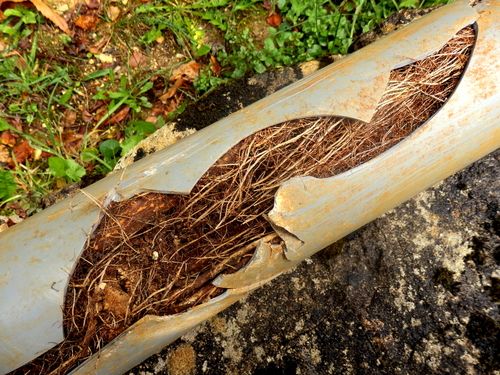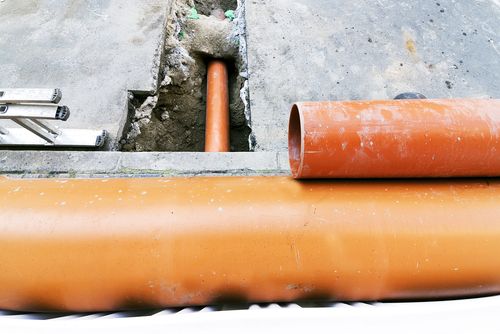Imagine how much pipeline there is carrying water into and waste out of your home. Now, imagine that damage causes the pipes to break down, develop leaks, and stop performing efficiently. It doesn’t take a lot of imagination to see how problematic this can be. This scenario occurs with every home or commercial building eventually. Considering that the pipeline runs between the walls, under the floors, and beneath the ground, it’s also easy to imagine how expensive it can be to restore the pipe system.

Hazards of Aging and Damaged Pipes
The potential cost of repiping might tempt you to ignore the problem. But the problem will only grow, not go away. If there’s damage to your drinking water supply, the quality of the drinking water might be compromised. Leaks not only allow water to escape but they also let bacteria and other contamination into the water line.
Water and sewage leaks can damage your property, both indoors and out. Once the integrity of the pipe is compromised, the damage will only grow. Water leaks drain our natural resource and cost you money at the same time.
Repiping is extremely expensive, even when it involves a small apartment. Whether it’s your home or business, the chaos that ensues can be even more disturbing. It starts with plumbers tearing down the barriers between them and the existing pipes. Once they replace them with new pipes, they start the reconstruction phase. It’s noise, mess, and a big hit to your wallet.
Before starting the repiping process, the contractor must obtain information about any gas lines, electrical lines, or other underground systems in the area. Any landscaping or concrete areas covering the pipes must be broken.
While digging the trench, the contractor must prepare and backfill the space to prevent pipe damage. A poor job can cause the pipes to crack, joints to break, or dips or bends to occur in the pipes.
There shouldn’t be any rocks or debris in the bottom of the trench that will prevent it from providing uniform support to the pipe. If there are large rocks or bedrock, they should line it with sand.
Ideally, the trench will be a minimum of double the width of the pipe. This provides space to work in and gives them room to snake a small-diameter pipe through the trench even after the pipe contracts or expands.
An important part of the installation process is the gluing of the pipe joints. It is important that the pipe remains in place throughout the gluing process. The trenching process is just one part of the repiping process. But it is a very time-consuming one that requires in-depth expertise. Failing to do a professional job will result in pipe damage and the need for additional pipe repair in the near future.
Pipelining: A Better Option
Pipelining is a better option than traditional pipe replacement. It takes considerably less time and costs hundreds to thousands less. It also eliminates the disruption to you, your family, or your residents. Pipelining restoration isn’t a temporary solution. It doesn’t act as a Band-Aid to buy you a little more time. It’s a permanent solution that restores the pipes in your building without the time and money investment of repiping.
Patching and repairing leaks, on the other hand, are stopgap measures that only postpone the inevitable. For many building owners, the mess is even more of a concern than the cost. It isn’t just the damage to the structure, but the trenching process on the outside of the facility. Understanding what trenching entails only makes trenchless pipelining more inviting.
Advantages of Piping Restoration
Piping restoration, or pipe relining, is a non-invasive process that protects the structure of your home or business. Technicians apply an epoxy lining to the inside of your existing pipes. They apply pressure to the lining material until it cures. Once the lining has dried, it forms a new pipe right inside of the old one. Best of all, the material only takes two to three hours to cure.
Pipelining doesn’t cause any damage to your building’s surfaces or your landscaping. It’s a safer process than pipe replacement because it doesn’t require you to damage sound sections of your building simply to gain access to the pipes. You and your family don’t need to relocate for weeks or months until the project is complete. By the end of the day, you can go on with life as usual!
Dealing with pipe issues in a home is big enough. When damage occurs in a commercial building, it’s even bigger. Government buildings, municipalities, and other commercial businesses can’t shut down until they get their pipes fixed. It’s more than a matter of inconvenience when an intensive repiping job is performed. It means finding ways to work around a mess that makes any business look bad. When you choose pipe restoration, on the other hand, no one will ever know you had your pipes repaired.

Reasons Pipeline Restoration Is Growing More Popular
Damaged pipes can lead to water leaks, the introduction of bacteria into your water supply, and damage to your building and property. Short-term solutions really aren’t solutions at all. Instead, having water system issues diagnosed early and opting for pipelining will solve the problem with as little disruption as possible.
Pipelining allows you to retain control of the repair schedule. Decide on the best time for you and your tenants. As a business owner, you won’t lose more than a couple precious business hours, if any at all, and there’s a lot less noise to contend with. In many cases, there’s not any tenant or resident displacement. With repiping, staying in the residence or business for the entirety often isn’t possible. During the process, there is no access to sewage and/or drinking water.
One often-overlooked benefit of pipelining is the lessened impact it has on the environment. Our landfills are already overloaded with plastic products that will never degrade. By lining instead of replacing, there’s no addition of materials to the landfills. Everything stays where it is but with a new lining that makes it safe and durable.
Repiping Technology
There are different types of pipes that serve a variety of functions. There are also different types of damage that commonly occur with each. A variety of repiping technologies makes it feasible to create just as many solutions. Some of the variations in water line types include:
- Hot Water Lines
- Cold Water Lines
- Fire Suppression and Sprinkler Lines
- Waste Lines
- Drains
- Natural Gas Lines
- Process Piping Lines
Epoxy coatings are the pipelining process of choice for most residential and light commercial projects. Different manufacturers produce epoxy coatings, each with some variations in the application process. Most applications follow a similar 3-step process including:
- The technicians use compressed air to clean and/or dry the pipe’s interior.
- They apply the liquid epoxy to the interior of the pipe using a saturated tube or by other methods.
- They install a balloon or bladder into the pipe to create consistent pressure against the epoxy and hold it in place until it cures.
Once the epoxy cures, it forms a strong, durable barrier inside the existing pipe. The epoxy coats any damage including pinholes, cracks, and fractures. It also forms a barrier that eliminates problems like slab leaks, lead or copper leaching, and rusty water.
Cost is always a priority when considering any type of service. Many people consider the lower cost of pipelining as its biggest advantage over pipe replacement. It’s especially important when you’re talking about your business and the interruption to its productivity.
Traditional repiping is destructive to your building and to your immediate surroundings. If your pipe system runs under your parking lot, the new water fountain you put outside or the carefully maintained landscaping that makes your business look great, restoring these fixtures adds to the cost, too. Not only will the contractors do significant damage to these areas, but you have to foot the bill to repair them once the job is over.
What happens if they don’t do a professional quality installation? It’s possible that your new pipe installation could fail soon after the process is complete. Do you really want to foot the bill for a repeat performance?
Pipelining only takes a few hours and hardly gets noticed. Pipe replacement is a destructive process that lasts for weeks or months. It doesn’t take long for tenants or potential new tenants to take notice of the building’s failing water system. It could cause you to lose business you have and new business as well.
If you’re a business person who always works to get the best return on your investment, the decision between repiping and piping restoration is an obvious one. The process that costs the least, takes the least amount of time, and doesn’t cause any damage to your residence or business is also the one that gets the best results.
If you have a failing water system, contact San Diego Pipelining. We offer pipelining solutions that fit every situation.
